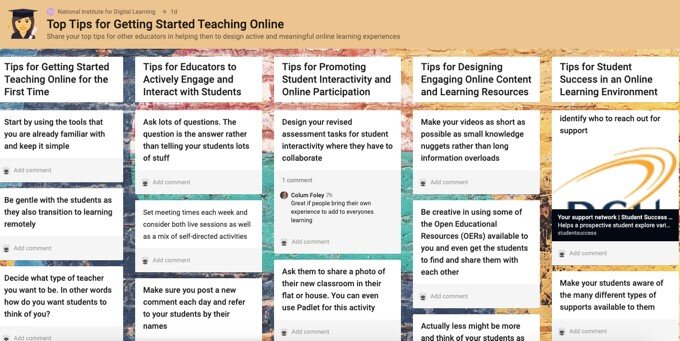Apr
2020
Digital Literacy for St. Cloud State University
https://stcloudstate.custhelp.com/app/answers/detail/a_id/1179
https://www.stcloudstate.edu/provost/students/remote-classes.aspx
APRIL 09, 2020
https://www.chronicle.com/article/Faculty-Members-Fear-Pandemic/248476
Covid-19 is being described as both a crisis and an opportunity for higher education. But how “opportunity” is defined depends on where one stands in the academic hierarchy. While some hope the pandemic provides a chance to reverse troubling trends toward the adjunctification and casualization of academic labor, administrators may see it as a different sort of opportunity, to realign institutional priorities or exert greater authority over their faculties.
A statement by the Tenure for the Common Good group offers 20 recommendations for administrators, including that they “resist using the current crisis as an opportunity to exploit contingency further by hiring more contingent faculty into precarious positions.”
As faculty members are asked to take on greater teaching, advising, and administrative responsibilities, faculty development and retention “will be more important to institutional resilience — survival — than ever before,” Kiernan Mathews, executive director and principal investigator of the Harvard Graduate School of Education’s Collaborative on Academic Careers in Higher Education, wrote on Twitter.
To DePaola, the pandemic doesn’t pose new problems to academe as much as it magnifies existing ones. “Everything was held together with gum and paper clips, and coronavirus came and just sort of knocked it all down at once,” DePaola said. “I think none of the crises that this virus is causing are new. They’re just accelerated greatly. And the contradictions of the system are heightened all at once for people to see.”
2020-04-11
Beginning in March 2020, many universities shifted to on-line instruction to slow the spread of the novel coronavirus, and many now face the difficult decision of whether and how to resume in-person instruction. This article uses complete transcript data from a medium-sized residential American university to map the two-node network that connects students and classes through course enrollments. We show that the enrollment networks of the university and its liberal arts college are “small-world” networks, characterized by high clustering and short average path lengths. In both networks, at least 98% of students are in the main component, and most students can reach each other in two steps. Removing very large courses slightly elongates path lengths, but does not disconnect these networks or eliminate all alternative paths between students. Although students from different majors tend to be clustered together, gateway courses and distributional requirements create cross-major integration. We close by discussing the implications of course networks for understanding potential epidemic spread of infection on university campuses.
+++++++++++++++
Responding to Covid-19: The Good, the Bad and the Ugly of Teaching Online — https://t.co/QdOaYLOQGR pic.twitter.com/eLANBFpkwp
— Ana Cristina Pratas (@AnaCristinaPrts) April 9, 2020
https://www.icde.org/icde-blog/2020/3/26/responding-to-covid-19
Importantly, today’s educators in the digital-era have a range of new teaching methods, activities and resources they can consider when choosing their learning designs. Although the traditional face-to-face lecture is not dead, delivering a monologue for an hour to a passive audience of learners is hardly the gold standard of good teaching in the 21st Century–irrespective of delivery mode. This point should not be overlooked in the rush to replace conventional teaching with live online sessions using platforms like Zoom.

Most importantly, what we want to avoid is using old 19th Century teaching methods on new 21st Century technologies to merely dump large volumes of undigested information down large digital diameter pipes to relatively inactive and passive learners.
ICDE has a series of forthcoming webinars you can join and you will find around a dozen different types of online course offerings available right now for educators on our NIDL Resource Bank.
+++++++++++++++
more on distance education in this IMS blog
https://blog.stcloudstate.edu/ims?s=distance+education
+++++++++++++Formative Assessment in Distance Learning https://t.co/QUPWB2sA15 #education #edchat #k12 #remotelearning #assessment #thriveinedu #edcovid #edutwitter #distancelearning #edtech
— Rachelle Dene Poth #ThriveinEDU #AI #ARVR (@Rdene915) April 8, 2020
https://www.edutopia.org/article/formative-assessment-distance-learning
Whether we use synchronous or asynchronous online sessions, whether we call it distance or virtual learning, we’re all challenged to provide meaningful education experiences at a distance as the education world grapples with the impact of Covid-19.
Know your purpose
Collect data over time
Focus on feedback
Check for understanding in synchronous sessions
Leverage personal conversations
Check in on SEL
Make it useful
+++++++++++++++++++
+++++++++++++++++
formative assessment in this IMS blog
https://blog.stcloudstate.edu/ims?s=formative+assessment
A virtual reality (VR) medical training system built by Oxford Medical Simulation (OMS) is now being offered for free during the COVID-19 pandemic to help hospitals and medical schools bring in badly-needed additional staffers to provide patient care.
++++++++++++
more on VR and Nursing in this IMS blog
https://blog.stcloudstate.edu/ims?s=VR+nursing
Thursday, March 26 1 p.m. Eastern | 12 p.m. Central
South Korea is using the analysis, information and references provided by this integrated data — all different real-time responses and information produced by the platform are promptly conveyed to people with different AI-based applications.
Whenever someone is tested positive for COVID-19, all the people in the vicinity are provided with the infected person’s travel details, activities, and commute maps for the previous two weeks through mobile notifications sent as a push system.
++++++++++++
How do you support your faculty while moving traditional instruction online with urgency during #COVID19?
Recap our PODLive session to learn how two institutions have been accomplishing just this.
Video/audio recordings, slides and a transcript are here: https://t.co/RsUGmKgkgi pic.twitter.com/wSBAM5m8bx
— POD Network (@PODNetworkHQ) March 13, 2020
It looks like @googledocs can’t handle the demand people are putting on the Colleges and universities closed for COVID-19 spreadsheet.
It’s defaulted to view only and I just received 300+ requests to edit. pic.twitter.com/OXKATcL5ca— Bryan Alexander (@BryanAlexander) March 11, 2020